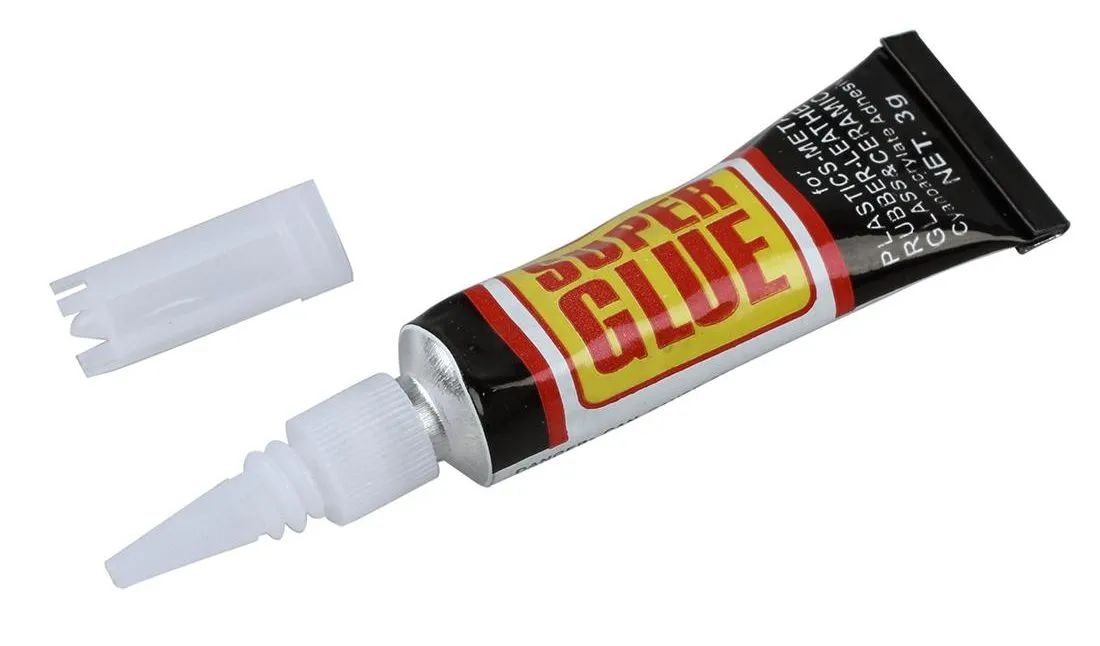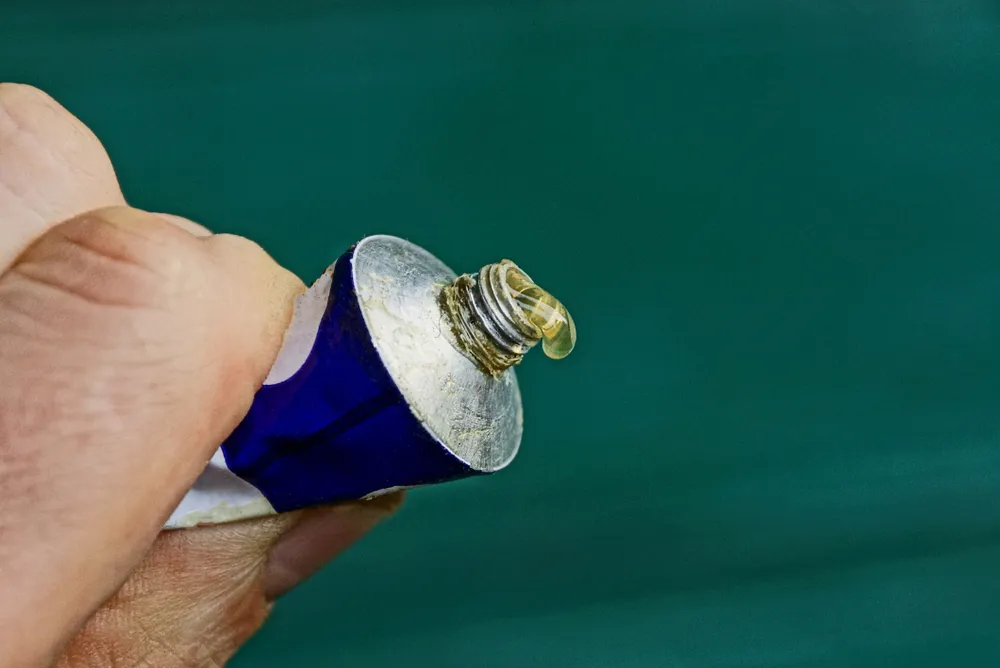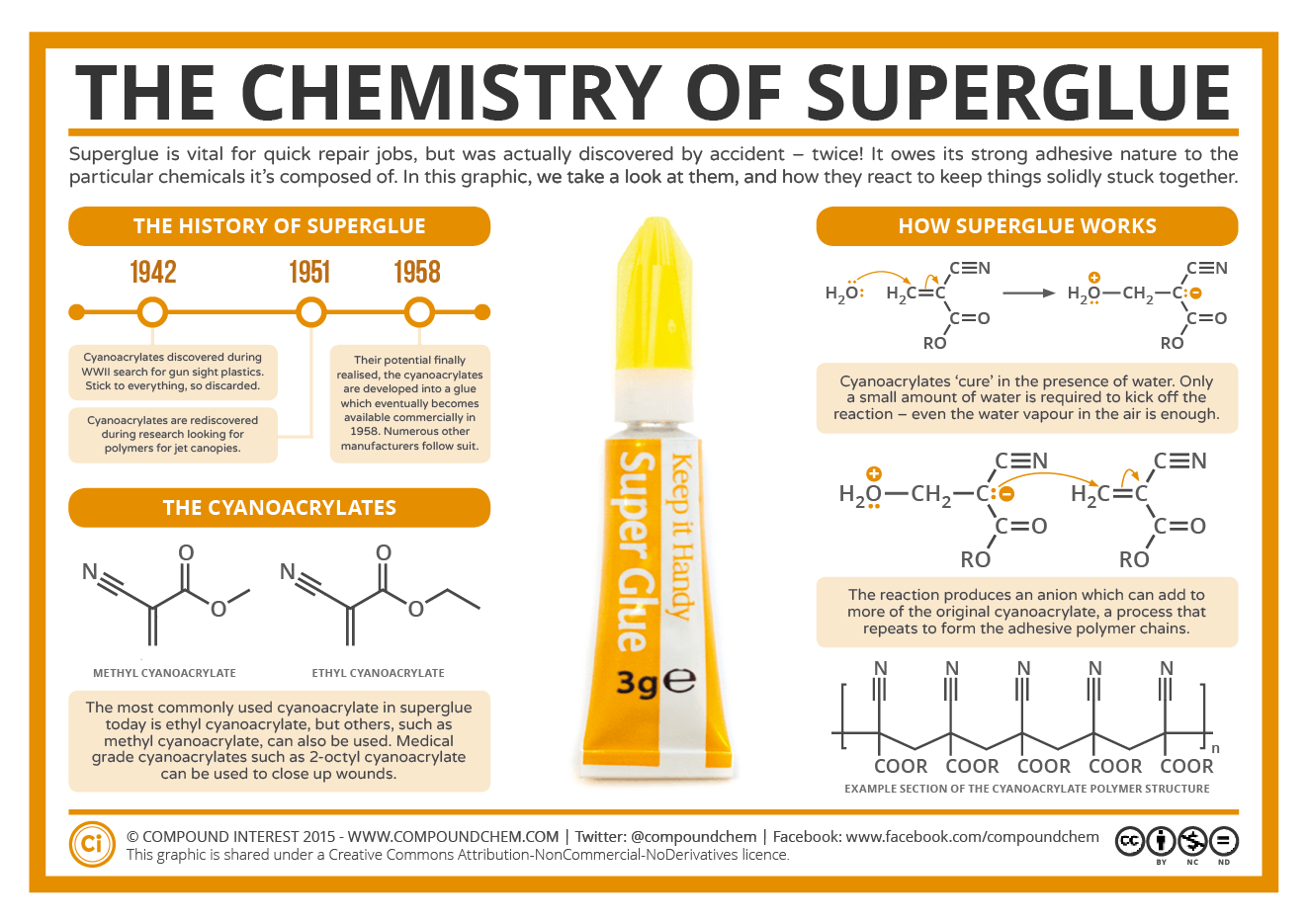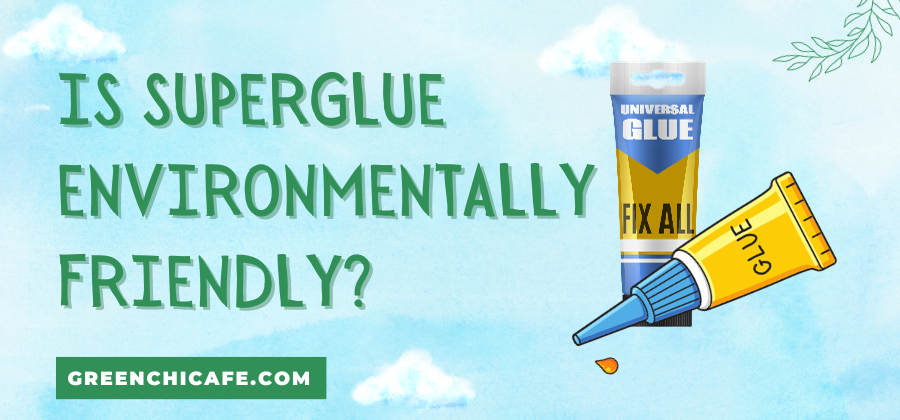Last Updated on June 3, 2024 by Annie Baldwin
Superglue is known as cyanoacrylate adhesive.
It has become a staple in many households and workplaces thanks to its strong, fast-acting bonding abilities.
However, this popular adhesive is made from synthetic materials derived from oil and other chemicals — raising questions about its environmental impact.
Is Superglue Environmentally Friendly?

No, traditional superglue is generally not considered environmentally friendly.
It contains toxic chemicals that can pollute the air and do not biodegrade easily.
However, scientists have developed innovative new eco-friendly adhesives made from renewable materials like cellulose that provide a more sustainable option.
Key Points
- Traditional superglue contains cyanoacrylate, a toxic chemical derived from fossil fuels.
- Superglue releases VOCs that contribute to air pollution and climate change.
- New eco-friendly adhesives made from cellulose are renewable and biodegradable.
Our Opinion
In my expert opinion, while traditional superglue has negative environmental impacts due to its harsh chemical makeup, the development of plant-based eco-friendly adhesives provides a promising sustainable alternative without compromising on bonding strength.
Consumers and manufacturers should look to move away from cyanoacrylate-based superglues toward more earth-friendly options to reduce pollution and waste.
Is Superglue Biodegradable?

Standard superglues are not biodegradable or recyclable. The cyanoacrylate compounds that give superglues their instant sticking power do not break down naturally over time. This makes super glue difficult to remove or clean up if it ends up in soil or waterways.
Some key facts on the eco-friendliness of traditional super glue include:
- Made from oil-derived chemicals like formaldehyde and cyanoacrylate that persist in the environment.
- Production and use can release volatile organic compounds into the air.
- Difficult to recycle and not biodegradable, resulting in microplastic pollution.
- Hard to remove once dried, so it can contaminate compost or recycling streams.
However, scientists have developed new plant-based eco-glues made from cellulose that provide a more sustainable and biodegradable alternative to traditional superglues.
These eco-friendly versions offer comparable strength while avoiding the use of harsh chemicals. They break down naturally over time without releasing toxic substances into soil or water. Brands like Gorilla Glue now offer plant-based options for consumers looking for greener glue choices.
So in summary, cyanoacrylate super glues are generally not environmentally friendly. But new plant-derived eco glues provide a more earth-conscious option without sacrificing bonding performance.
What Are the Ingredients in Super Glue?

The main ingredient in traditional super glue is cyanoacrylate, a fast-acting adhesive made from synthetic chemicals. Specific cyanoacrylate compounds used in super glues include:
- Methyl cyanoacrylate
- Ethyl cyanoacrylate
- n-butyl cyanoacrylate
These adhesives form strong bonds in seconds by reacting with moisture on the glued surfaces. However, the cyanoacrylate compounds are derived from non-renewable petroleum sources.
Super glues also contain additives like plasticizers to increase flexibility and shelf life. Extra ingredients may include:
- Stabilizers to prevent premature hardening
- Thickeners to help control flow
- Colorants or UV indicators
The cyanoacrylate ingredients and additives make superglue highly effective but also difficult to break down after use. This has led to increased interest in plant-based alternatives using sustainable ingredients like cellulose nanocrystals from sources such as wood pulp or agricultural waste.
These eco-friendly glues provide comparable adhesive strength while avoiding the synthetic chemicals found in traditional superglues. The natural ingredients make them much more biodegradable as well.
How Is Superglue Made?
The manufacturing process for cyanoacrylate-based superglues involves synthesizing the cyanoacrylate monomers from precursor chemicals. This is done through a reaction between cyanoacetate and formaldehyde, which are derived from oil and natural gas.
The specific cyanoacrylate monomer, such as methyl, ethyl, or n-butyl cyanoacrylate, determines the properties of the final superglue product. These monomers are generated under carefully controlled conditions to produce pure compounds.
Additives like plasticizers, stabilizers, or thickeners are then combined with the cyanoacrylate. These ingredients are mixed in precise concentrations to create super glues with desired performance characteristics.
The cyanoacrylate-additive mixture is packaged into the familiar small bottles or tubes. As moisture is excluded from the packaging, the adhesive does not cure until exposed to humid air during application. This gives super glue its rapid bonding ability.
Manufacturing eco-friendly bio-based super glues follows a different process. Natural polymers like cellulose are extracted from sustainable plant sources. These are then broken down into nanocrystals and turned into a cyanoacrylate-free adhesive.
While the ingredients and chemistry vary compared to traditional super glues, the manufacturing principles of synthesis, mixing, and packaging remain similar for optimal adhesive performance.
What Is the Environmental Impact of Super Glue Production?
The petrochemical feedstocks used to make traditional super glues have negative environmental impacts. Oil and natural gas extraction harms ecosystems and produces greenhouse gases.
The manufacturing process also requires substantial energy and water resources. Wastewater containing solvents, catalysts, and unreacted monomers may be generated as well.
Proper treatment and disposal of this industrial waste is crucial to prevent contamination. Spills can be especially damaging if they enter waterways or groundwater.
In contrast, bio-based super glues utilize renewable plant sources like cellulose. Their production has lower carbon emissions compared to petrochemical versions.
However, these “green” adhesives still require manufacturing steps that consume energy and water. Proper waste management is essential to minimize environmental footprints.
Ultimately, consumers must dispose of used superglue bottles and dried residues responsibly. Putting these materials in landfills or dumping them improperly can leach toxic compounds over time.
Recycling programs, consumer education, and further research into sustainable adhesives can help reduce the impacts of superglue on the environment in the future.
Are There Eco-Friendly Super Glue Alternatives?
Yes, innovative options are emerging that improve upon traditional petrochemical-based super glues.
Some companies now offer super glues made from plant-derived cellulose nanocrystals. These bio-based adhesives deliver comparable strength while reducing dependence on fossil fuels.
Sugars and vegetable oils can also be used as feedstocks. The resulting super glues have lower VOC emissions and are less toxic if accidentally ingested.
Meanwhile, researchers are developing super glues from mussel proteins that mimic their natural adhesive abilities. These glues are biodegradable and work well in wet environments.
Even Elmer’s Glue now offers an eco-friendly “Washable No-Run School Glue” made from renewable resources. While not as strong as super glue, it bonds paper crafts with less environmental impact.
Consumers can also reduce waste by purchasing superglue in bulk containers instead of many small tubes. Seeking out recycled and recyclable packaging helps too.
Ultimately, we all must be more mindful of consumption. Using glues sparingly, reusing bottles and recycling properly limits our footprint. Small changes add up to make a real difference!
FAQ
How Bad Is Superglue for the Environment?
Superglue contains toxic chemicals like cyanoacrylate that can release harmful VOCs into the air. These VOCs contribute to air pollution and can be difficult to break down once released.
Does Superglue Biodegrade?
No, superglue does not biodegrade easily. The chemicals in super glue can persist in the environment for a long time.
What Glue Is Environmentally Friendly?
Eco-friendly glues made from natural materials like cellulose or starch are better for the environment. These bio-based adhesives break down more easily.
Is Superglue Made With Fossil Fuels?
Yes, traditional superglue is made from chemicals derived from fossil fuels like petroleum. Eco-friendly glues avoid these non-renewable resources.
Conclusion
Traditional superglue containing cyanoacrylate is not environmentally friendly. It is made from harsh chemicals derived from fossil fuels that can release toxic VOCs into the air. However, the development of innovative eco-friendly adhesives made from renewable materials like cellulose provides a more sustainable option without sacrificing bonding strength. Overall, while regular superglue has negative environmental impacts, green alternatives are emerging as a promising solution.
